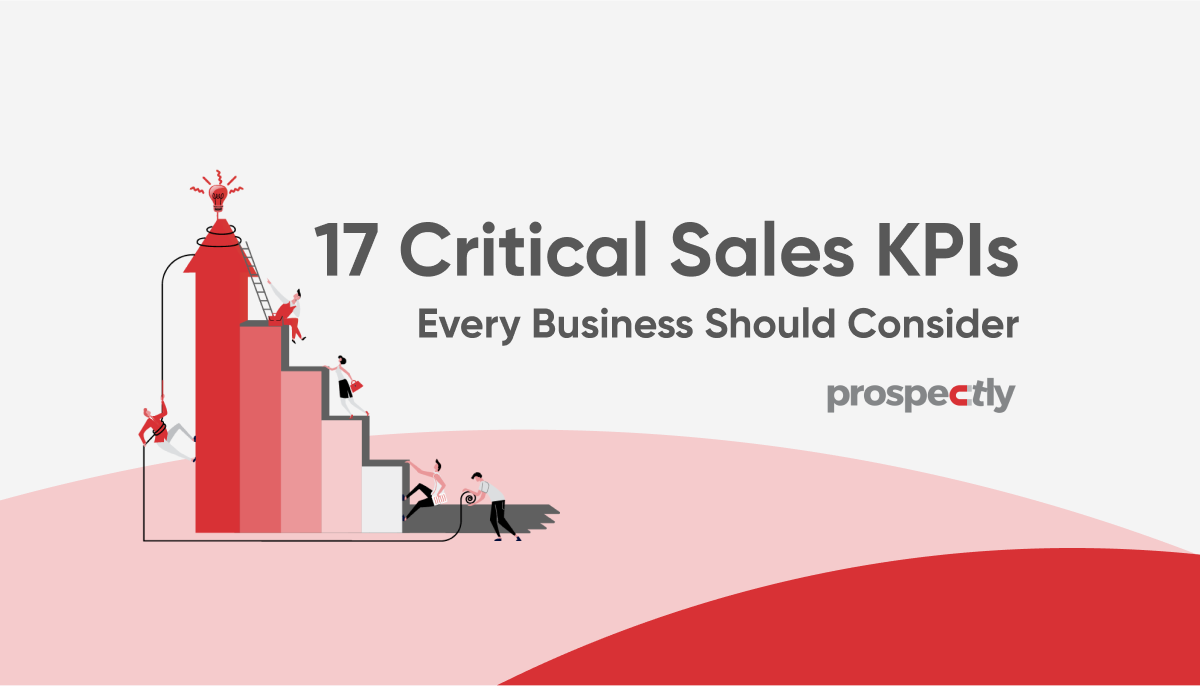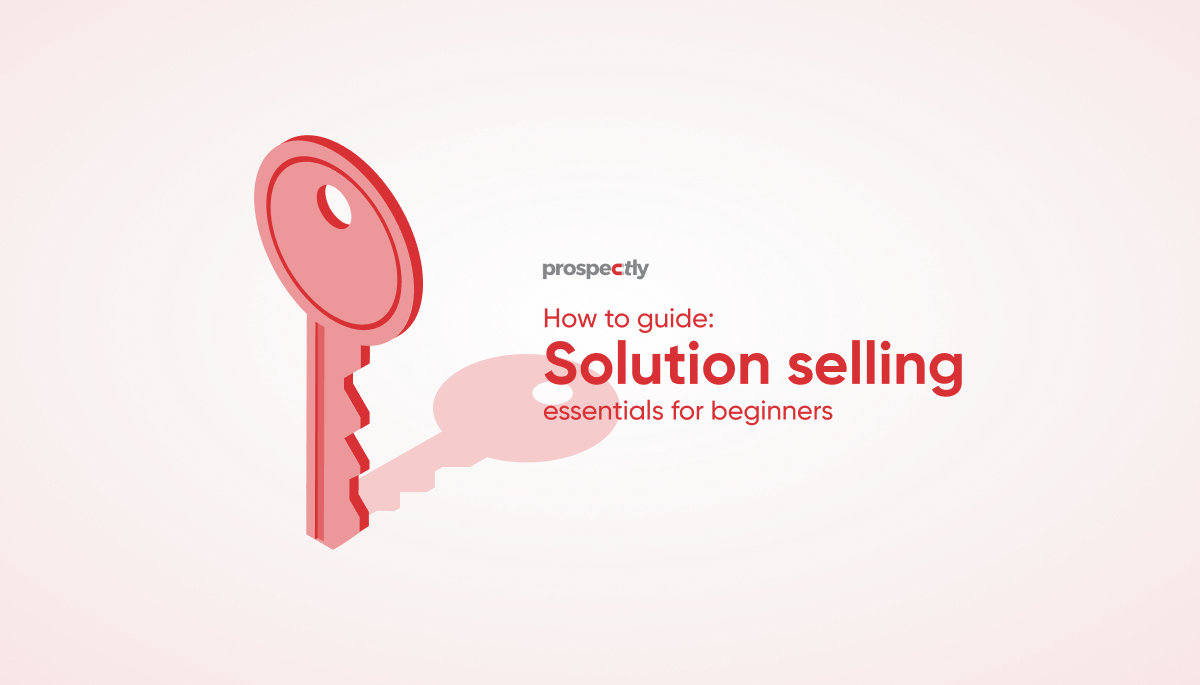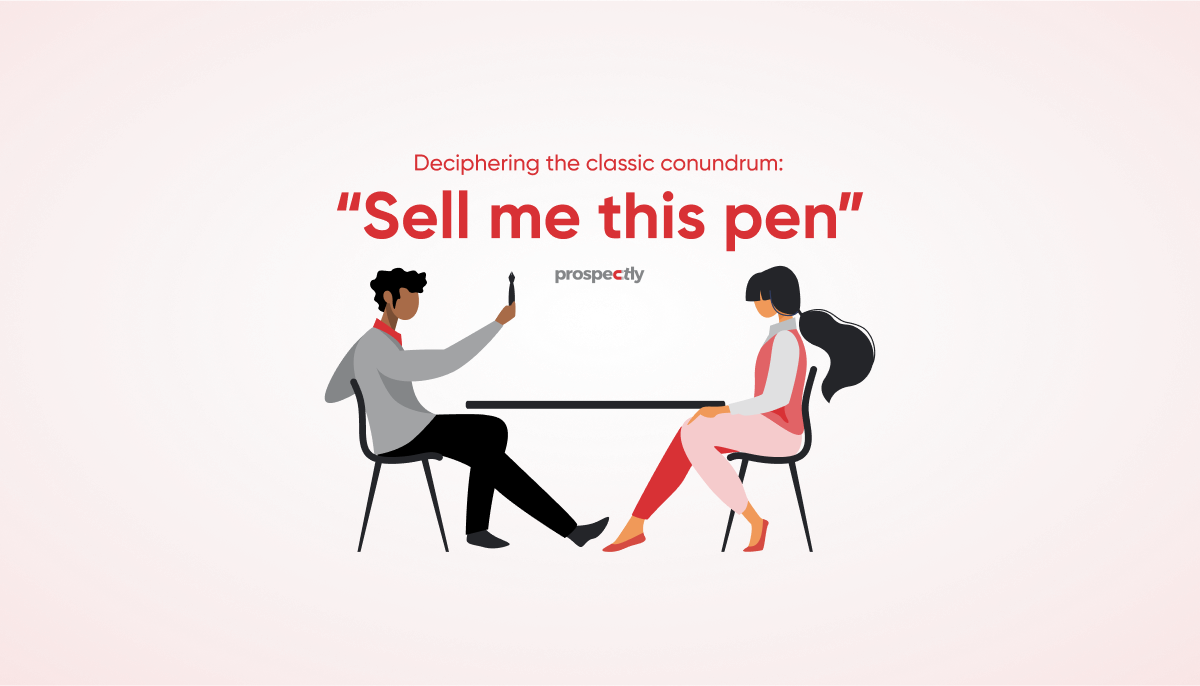SPIN selling – Lessons learned from the pros
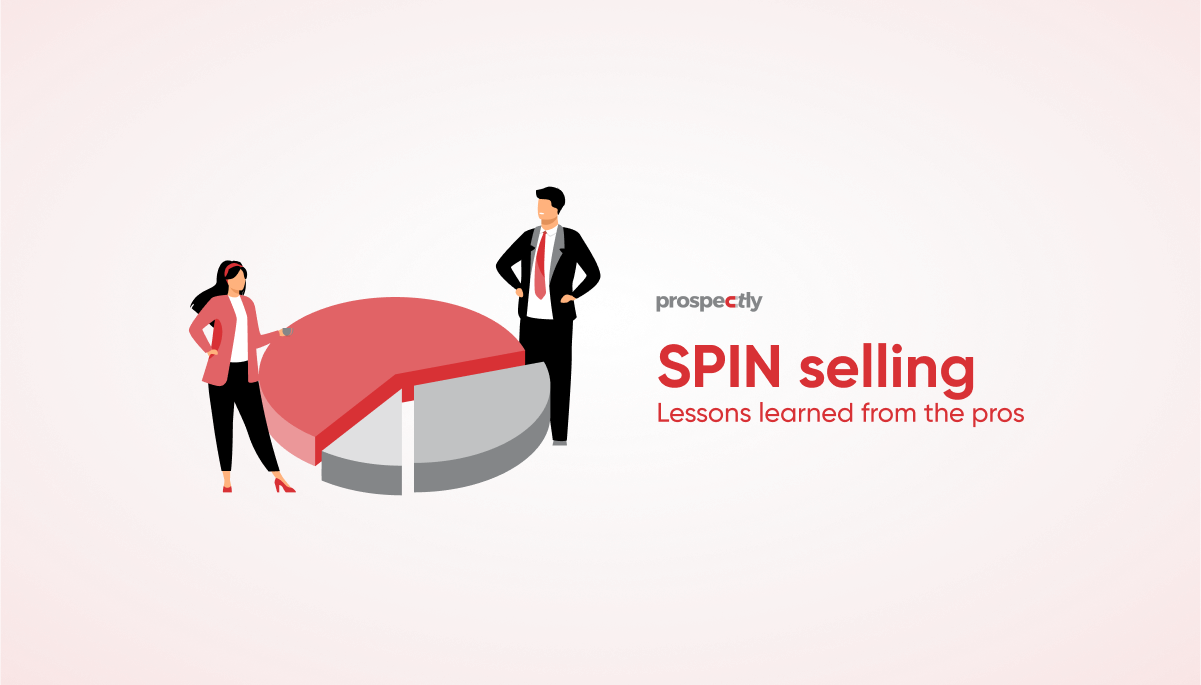
SPIN Selling is a portent technique that sales professionals use to help create urgency within their prospects and close the deal. There is a certain psychology behind it that anyone can learn.
Let’s explore this strategy along with the different elements and processes to implement it.
What is SPIN selling?
SPIN selling is a sales methodology that focuses on understanding customers’ buying behaviors, unearthing pain points, and helping them understand their own needs.
Developed by Neil Rackham in his book “ SPIN Selling”, the sales strategy emphasizes building trust with your customers. As a rep, you know how crucial it is to grasp your buyer’s needs before you can propose solutions, right!
But how do you do that? The key lies in uncovering the prospect’s hidden pain points while they get all hyped up on benefits.
In the standard selling method, you might be asking these questions: “What do you need? What do you want? What don’t you like?” Instead, in SPIN Selling, sellers ensure that they’re listening to customers and gaining their insights by asking a lot of questions.
SPIN Selling is an acronym that stands for Situation, Problem, Implication, and Need-payoff.
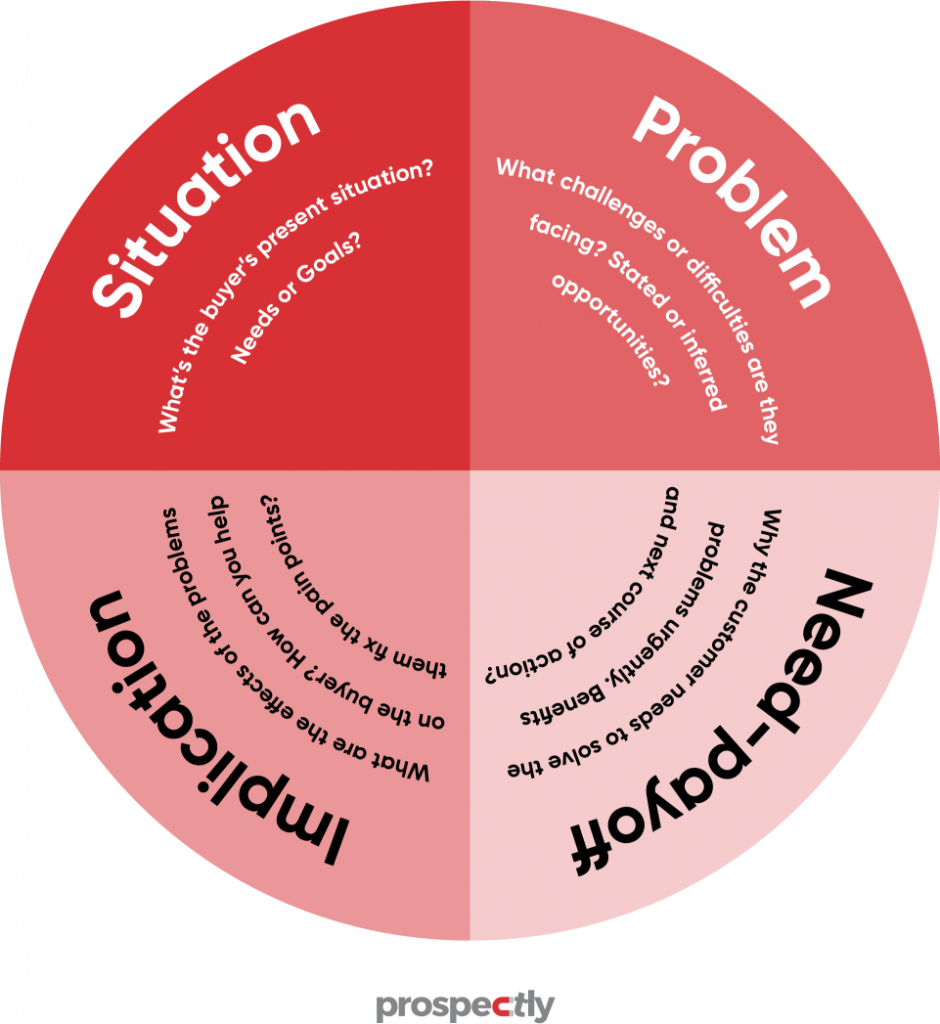
Situation: What’s the buyer’s present situation? Needs or Goals?
Problem: What challenges or difficulties are they facing? Stated or inferred opportunities?
Implication: What are the effects of the problems on the buyer? How can you help them fix the pain points?
Need-payoff: Why the customer needs to solve the problems urgently. Benefits and next course of action?
SPIN selling summary
Here are the key points of the SPIN selling book by Neil Rackham, the founder of Huthwaite International.
- Customers buy on emotion and justify it with logic.
- People want to feel confident when they buy.
- Buyers need to know what’s in it before buying.
- People don’t like to be sold, but they love to purchase.
- The 4 stages of a buying decision/SPIN selling
- What the customer needs from you at each stage of a decision.
- You need to zero in on your customer’s interests, not yours.
- Sellers should create a story around their product or service.
- Reps need to use questions instead of statements when communicating with their customers.
The SPIN Selling book is a classic that is popular in the sales world. We recommend you dig deeper into the material to sharpen your selling techniques to crush your goals.
Meanwhile, read on to discover more juicy sales strategies.
The four stages of SPIN selling
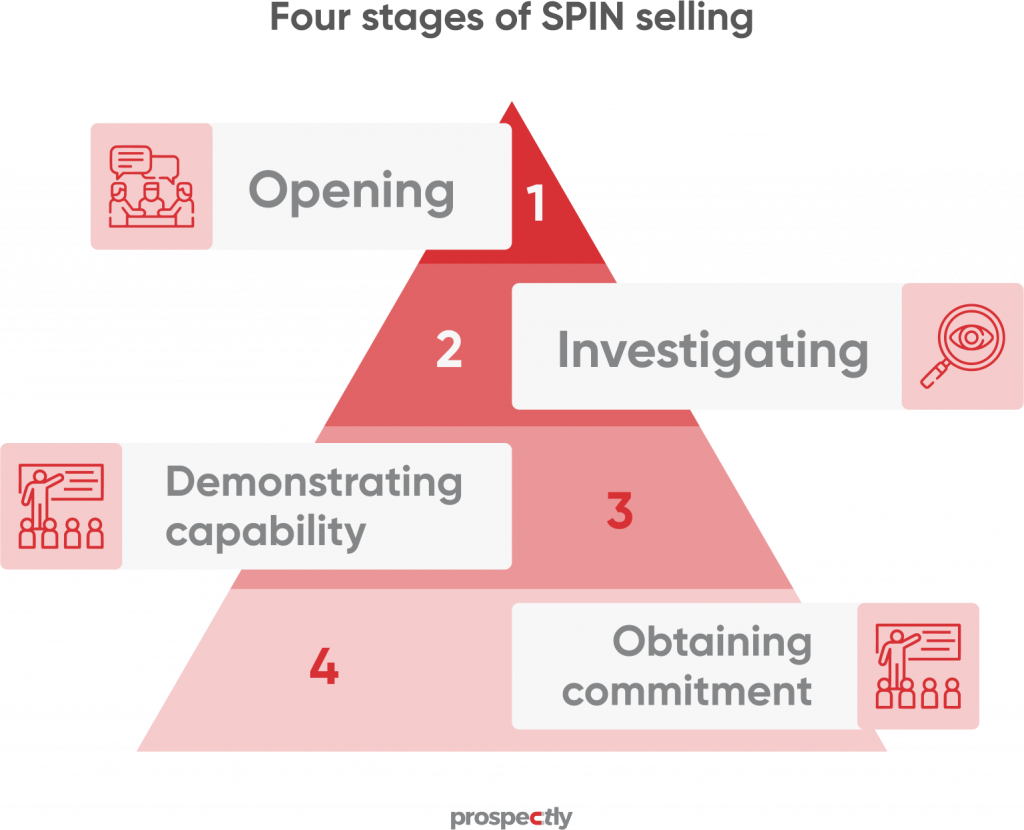
Typically, the SPIN Selling sales methodology outlines four essential steps to closing a deal. They include opening, investigating, demonstrating capability, and obtaining commitment. What does each process mean for you?
1. Opening
One of the mistakes that sellers do is to shove their products in their customers’ faces. Yes, literally-reps brag about how their solution is a game changer and can fix the prospect’s challenges. That’s not the way you should sell, according to the SPIN Selling approach.
Instead, aim to build trust and rapport by asking questions about the buyer’s challenges. Be like a doctor-gather as much info as you can about the lead. Avoid seeing them as a source of revenue, but rather show that you want to help.
2. Investigating
Now you’ve got a general idea about what your potential customer wants. The next step involves asking specific questions about their frustrations. Your goal is to grasp how your product can solve those problems.
You also want the buyer to self-diagnose through your inquiries. In this way, you can establish yourself as a credible source interested in their welfare. For example, you may say: What are the biggest problems your business faces with closing deals?
3. Demonstrating capability
At this stage, you have a complete picture of the customer’s exact difficulties. Next, show them how your product is the ideal solution by presenting its value, features, and benefits.
How can your solution change their life? In what way is it better than other products?
4. Obtaining commitment
It’s the final stage of the SPIN Selling method. You should be able to get a commitment from the prospect to purchase the product or subscribe to a service. If the deal sails through, you can laugh all the way to the bank.
But the potential buyer may raise some objections. Be prepared to handle them and propose to schedule a meeting with other key stakeholders for a demo.
SPIN selling questions
The SPIN Selling strategy is built around questions. Rackham and his counterparts at Huthwaite International burrowed into over 3o,000 sales interviews and discovered critical things to advance sales performance.
Let’s dive into some of these examples under each of the four stages of the SPIN Selling sales approach.
Situation questions
SPIN Selling situation questions help you understand the customer’s needs and guide the conversation toward a sale.
- What is your primary goal? In what ways does your current solution fall short in meeting that goal?
- How long have you been using this system/process? What do you like about it, and what don’t you like? What would make it better? Would you change anything about it? If so, what would those changes be?
- Why did you choose this product/service instead of another one like it? What was important to you when making this decision? Why did that matter more than other factors related to the purchase decision (e.g., price)?
- How did you get started in this business?
- What is the most successful marketing campaign you have ever run?
- Tell me about your most recent customer service experience. What did you like about it, and what could have been done better?
- What do you like most about your current vendor/service provider? What would you change if you could?
- What do you hope to accomplish by meeting with us today and understanding our product/service better?
Situation questions are open-ended questions that encourage the customer to tell you about their business. You become aware of their needs and how you can help them. The questions hinge on the idea that every sales call involves a problem, and the solution to that challenge is your product or service.
Problem questions
These questions get your prospect talking about their difficulties and how they see things. You want to find out what’s really going on and what their concerns are. The more info you can get from them, the better prepared you’ll be when you make your sales pitch.
- What are the biggest challenges you’ve been facing recently?
- What results are you looking for?
- How do you think this solution will help with those challenges?
- What would be the benefits of having this solution in place?
- How do you currently approach these challenges in your business?
- Can I ask who else works on this project with you?
- What are your top three problems?
- How do you define success in this area?
- At what point do you want to be successful? What would that look like to you? How would you know if you were successful or not? (This is a great question because it helps reps understand the customer’s definition of success.)
- What do you do now to solve this problem? How does it work for you? Does it work well enough for your needs and budget?
- Is there anything else available that might work better for you and your team? What would that look like?
- Do any of these options have an impact on other parts of your business, departments, or people?
- What would they think about using these solutions or products instead of solving the problem themselves?
Implication questions
They’re the higher order questions that enable you to uncover the buyer’s real needs. It’s the critical part of SPIN Selling. You should ask these implication questions to ensure that you’re selling the right thing, at the right time, and at the right price.
- If we were able to solve the [x] issue, would that change your mind?
- If we could help you achieve [y], would that make a difference in your decision?
- What happens if you don’t solve this problem right away? What are the potential consequences if you don’t address this situation today/soon/as soon as possible/immediately etc.?
- Do you have any goals that you’d like to achieve, but can’t do due to [problem]?
- What effect does [problem] have on your work?
- What’s the impact of this issue on your team’s performance?
- How does [problem] affect your buyers?
- Are there any chances of advancing your career by resolving [problem]?
Need payoff questions
Need payoff questions are the last step in the SPIN Selling process. They help you clarify the customer’s needs to determine if your company’s product or service is a good fit. And they also encourage the prospect to explain how your solution can resolve their problems.
- Are there any ways to make [insert process] easier to accomplish?
- Is it worthwhile to perform [insert process]?
- In your opinion, would it benefit your company to resolve the issue with [insert process or resource]?
- Is it important for your organization to be able to perform [insert process or operation]?
- Do you have any thoughts on how [insert process or resource] would benefit your staff?
How do I practice SPIN selling?
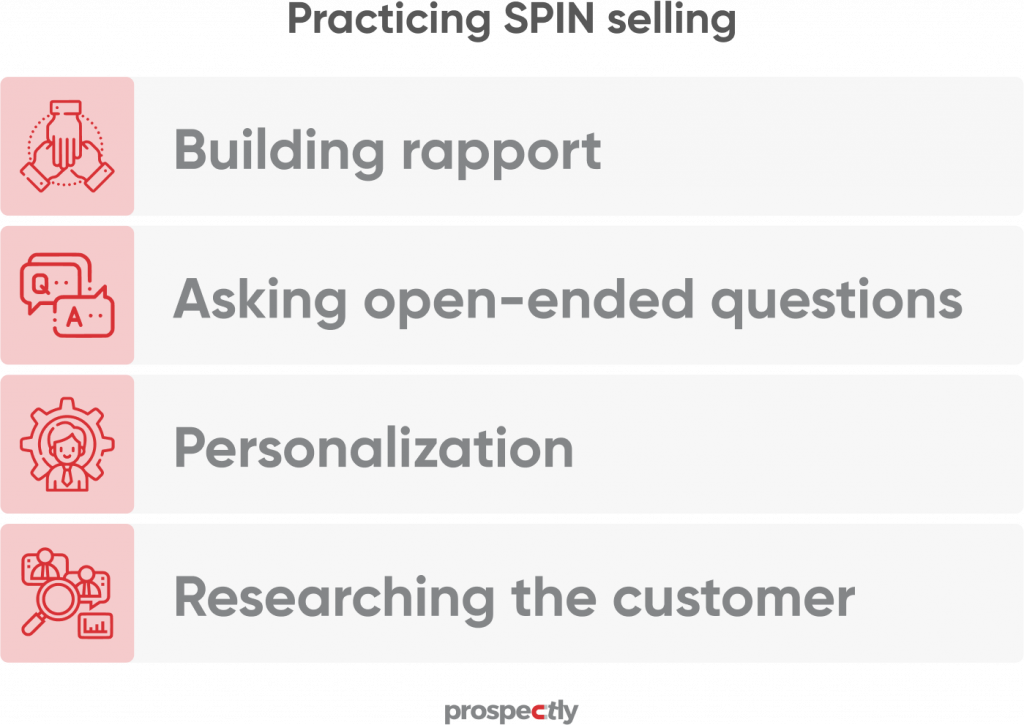
Here are some tips on how to successfully use the above sales methodology in selling.
Building rapport
When you build rapport with someone, it makes it easier for them to trust what you say. That’s because they feel like they already know you as a person — even if they’ve never met you before today!
Rapport building doesn’t require a lot of work or effort. Pay attention and make small talk about non-work related topics with the customer before diving into business-related matters.
Asking open-ended questions
Ask open-ended questions that let the prospect tell you their story in their own words. It helps you get more info about what they need before making recommendations on products or services.
Ensure that your questions don’t sound like you’re just trying to get details from them. Your goal should be to help them grasp their situation better to make an informed decision about purchasing.
Also read: 19 Best sales discovery questions to close more deals
Personalization
Personalization is key in a world where people have an aversion to being sold things they don’t need or want. Personalize your pitch by addressing specific problems your prospect has.
They’ll feel you’re more interested in meeting their needs than trying to sell them something they don’t need. It makes them more receptive to what you’re saying. And they become more likely to take action on your advice after the sales call ends.
Researching the customer
Make sure you have all your facts straight before walking into an appointment. When you’re armed with information, it shows you’re an expert, confident and prepared. It’ll help build trust with your buyer.
Does SPIN selling still work?
While there are many sales strategies, SPIN Selling is one of the most widely used because it works. Here are five reasons why this approach is still relevant today:
1. It’s based on research.
2. It provides a structure for communicating with prospects and customers.
3. It helps you avoid common mistakes when selling to people.
4. It’s easy to learn and apply in real time.
5. It allows you to tailor your message based on what your prospect or customer needs at any given moment.
Also, the following video gives you more irresistible benefits on why you need to use the sales methodology.
Bonus: You can also enroll in a SPIN selling training course to hone your sales techniques.
Start applying this sales strategy today!
SPIN Selling is based on the concept that customers buy solutions to their problems, not products or services. It involves asking questions to uncover the customer’s situation, problems, implications, and needs. A good SPIN question should be open-ended and not lead the customer towards a particular answer.
Also read: 9 Sales methodologies: How to win buyers and influence sales
Have you used SPIN Selling before? Tell us your thoughts in the comments below.
